
Learn all about plastics CNC machining; materials, methods, uses and best practices. Discover precision manufacturing optimization techniques in the automotive, aerospace, medical and industrial sectors.
1. Introduction to Plastics CNC Machining

In plastics CNC machining, material is removed from a solid block of plastic against a moving cutting tool, taking into account specific material properties. Plastics CNC machining is often regarded as a subtractive manufacturing process. Shaping the final part With the digital design file, the cutting tool will develop a predetermined tool path. Advanced manufacturing technique has gained more popularity in different industries because it has the capacity of producing quality parts with excellent accuracy and repeatability.
It entails the use of computer-driven machines which machine away parts of solid blocks of plastics, sheets or rods, and form the final parts. The CNC machining has greater precision and want of consistency compared to the traditional modes of manufacturing, and it creates geometrical versatility that might be impossible or hard to reach in the old manufacturing practices.
2. Understanding CNC Plastic Manufacturing Fundamentals
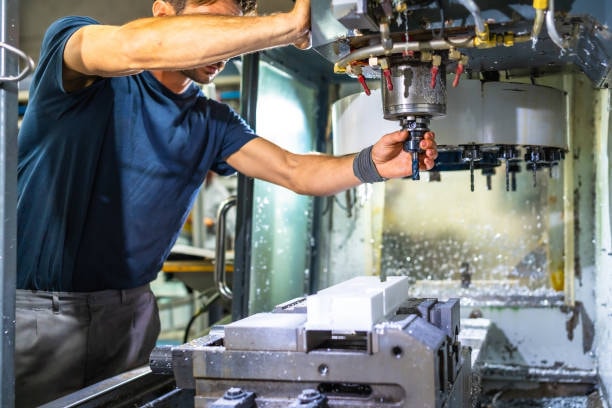
Computer Numerical Control (CNC) plastic manufacturing is another advanced technology of producing plastic parts using automated machineries. It starts by first using a digital design file usually in CAD format that is translated into machine readable commands referred to as G-code. These are used to direct the movements of the CNC machine which can control the many aspects such as speed of cutting, the rate at which the feed moves, and the path that the tool takes.
The basic principle consists of three major parts: CNC machine, the cutting tools, and the piece of plastic being worked on. Recent CNC models have been able to use more than two axes of movement which can be 3-4 or even 5-5 axis machines, enhancing the dimensional stability of complex components with features that would be otherwise difficult to manufacture through other manufacturing processes.
3. Essential CNC Machining Techniques for Plastics
Three main methods of CNC machining plastic have their purposes. CNC milling is the most versatile with the highest level of freedom of movement wherein rotational cutting tools cut-away the workpiece. The process is very effective in designing complicated geometry, inside features, and smooth surface finishing with a different type of cutting tools such as and end mills and special plastic cutting tools.
CNC turning is like rotating something, and a set tool is used to cut material and thus it gets used in making cylindrical parts. CNC drilling is also dedicated toward the production of precision holes and depressions, and, as such, particular consideration is given to tool geometries and cutting conditions so as not to damage the material and produce clean holes.
4. Types of Plastics Suitable for CNC Machining
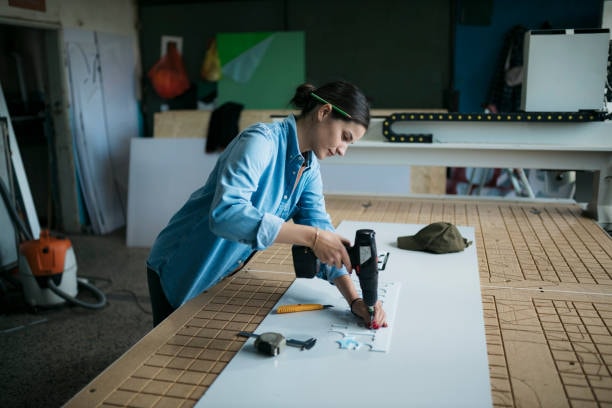
A choice of suitable plastic materials has to be chosen based on mechanical properties, thermal characteristics, intended use, and the characteristics of different plastics. The most widespread category of thermoplastics to be machined is ABS, Nylon, Polycarbonate and Acrylic. These materials have very good machinability, high potential of good surface finish and easy to be shaped with the help of any standard CNC process.
Other thermoplastics to be discussed include: engineering plastics such as PEEK, POM (Delrin) and PTFE which offer excellent chemical resistance and mechanical properties and are suitable in demanding applications. At the higher-performance end are high-performance plastics, including ULTEM and Torlon, which have excellent mechanical and temperature resistance where application durability is critical.
5. Advanced CNC Machining Applications
Contemporary applications of CNC machining include complex assemblies and through its more specific usage in the industrial sector. The creation of medical equipment is another of the most challenging applications that involves the use of precision components like surgical tools and implants that must not only be able to adhere to a high standard of precision but must also be biocompatible.
The components used in the aerospace industry are subjected to extreme conditions and expected to work in these conditions without any structural yield. CNC machining allows plastics to be used as substitutes to metal, which are lightweight, lead to fuel economy, and can withstand high temperature applications. Automotive industries also are very dependent on CNC machined plastic parts that go into interiors as well as the exteriors of automobiles such as dashboard items, engine bay components among others.
6. Tooling and Equipment Selection
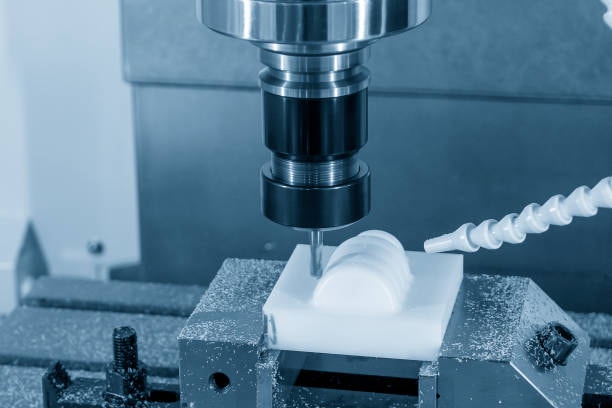
Effective plastic CNC machining requires proper choice of tooling options that are meant to work in plastic material. Properly designed cutting tools with sharp edges help to minimise heat during the process and melting or deforming of the material. Geometry of tool such as rake angles and relief angles have to be optimized to the used plastic material.
Particular importance is assigned to coolant systems and chip evacuation as materials are thermally sensitive. The right use of coolants also aids temperature coordination and avoids thermal harm. In selecting a machine, aspect to be considered are the size and type of spindle in terms of speed, rigidity and sophistication of the control system so that the performance can be optimized.
7. Quality Control and Precision Standards
Quality control-Quality control entails various levels of inspection and measurement so as to ascertain that parts satisfy the requirements. The automatic CNC procedure ensures continuity in many parts or entities, which provides stability in reproducible accuracy. Dimensional inspection uses multi-purpose coordinate measuring machine (CMM) and precision measuring devices to inspect the dimensions and tolerance of critical dimension.
Plastic machining needs special care regarding surface finish quality: the thermal effects may affect the surface greatly. Verification of material property means that machined component does not lose mechanical, thermal, and chemical requirements of base material.
8. Cost Optimization Strategies
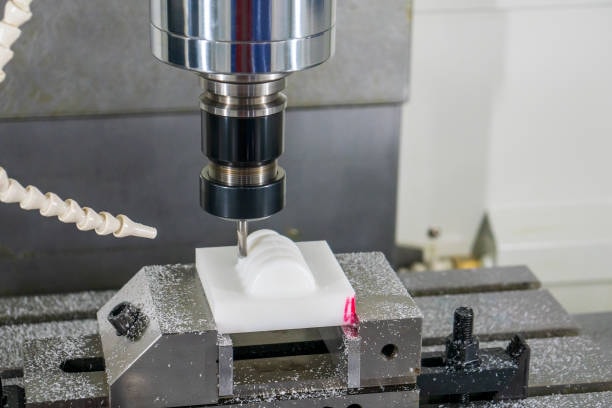
To achieve an effective cost optimization, several criteria should be taken into account, such as material selection, optimization of design and production planning. The choice of material has a great influence on the cost of the total package, as the cost of various plastic materials as well as the process of machining them, differ vastly. The improvement of the production costs of material could be achieved by picking the most cost efficient yet appropriate in terms of performance.
The optimization of design is also very vital in this process by removing redundant features and simplification of geometries. Production planning optimization encompasses optimization of batch sizing, reduction of setups, layout efficiency in a manner that favors maximum utilization of machines at the expense of minimum setups without compromising on its quality.
9. Surface Finishing Techniques
Surface finishing refers to a series of processes destined to implement wanted aesthetic and functional properties. The CNC may attain excellent surface finishing on plastic component parts with no layering that may constitute quite a smooth finishing. Sanding, polishing, and buffing form part of mechanical finishing techniques used to obtain smooth finishes on the surface of the product and eliminate machining footprints.
Chemical finishing operations, as vapor polishing, offer even surface finishes that can hardly be obtained using mechanical finishing only. Additional operations such as painting, coating and textures could be used in secondary processes to improve both aesthetically and functional attributes of CNC machined plastic parts custom parts.
10. Troubleshooting Common Issues
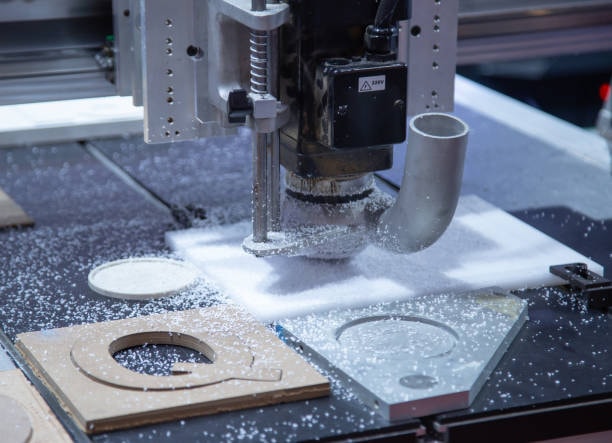
Typical problems are connected with the thermal effects, properties of the material and the parameters of the process. The most common issues are those related to thermal problems and they include melting, heat-affected zones, and thermal distortion. Some of the solutions involve optimizing cutting parameters, enhancing the use of coolant, and applicable tool geometries which could be used to cut plastics.
There are problems related to specific materials like work hardening of materials, stress cracking and deformation which need specific solutions depending on the plastic material under processing. The wear and breakage of tools may cause vital effects on the efficiency of the production and the quality of the parts, and tool checking and adequate choice of parameters are needed elevated temperatures.
11. Design Considerations for CNC Machined Parts
The design optimization needs to know the capabilities and the hindrances of the machining process. Accessibility to features is a major factor to be considered because the CNC machining needs to have the tool that will be used to produce some features. Deep pockets and internal features may need dedicated tooling, or set ups, making it more complex and expensive acrylonitrile butadiene styrene.
The thickness of the wall and structural construction has to consider the mechanical material of the plastic material and machining stresses. The tolerances should be specified in accordance with the machining potential of CNC and the true functional requirements so as not to incur unnecessary extra costs but make sure that functioning is done properly bead blasting.
12. Environmental and Sustainability Considerations
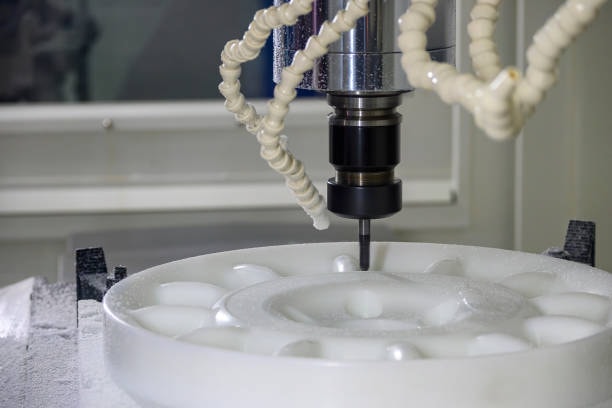
In plastic CNC machining, the aspect of environmental responsibility has become a crucial object of concern. The choice of materials is also important in this aspect and recyclable and bio-based polymers an plastics are promising to provide more sustainable reward to the old petroleum-based materials. The knowledge on environmental impact can lead to effective decision-making by striking the balance between performance and sustainability objectives low cost.
The actions to waste prevention are the optimization of the utilization of materials, recycling programs and end-of-life disassembly and recycling designs of parts. Achieving energy efficiency may be made possible with optimal cutting parameters, efficient use of machines, and maintenance measures certain plastics.
13. Future Trends and Innovations
Technological progress and a developed material science define the future of plastic CNC machining. These new technologies including automation and Industry 4.0 are changing operations by enhancing process monitoring, predictive maintenance and quality control automation. Smart manufacturing systems also allow optimization and quality checks in real-time cnc engraving.
The research in advanced materials is still broadening the list of machinable plastics with ever-new formulations having better properties. The concept of digital manufacturing that encompasses use of additive manufacturing (hybridization) in combination with more enhanced simulation technologies is transforming plastic part design and manufacture right cutting tools.
14. Industrial Applications and Case Studies

The different uses of the technology can be witnessed in daily usages in different spheres. The medical device industry is an example of precision and reliability in parts manufacturing, especially medical instruments and medical equipment used in surgery rooms and kits, demonstrating the versatility across numerous industries. These parts reveal that the technology can support high quality and regulatory standards and be cost-effective electrical insulation.
Weight-saving and performance-enhancing are favorable to aerospace application, whereas the ability of the technology to fabricate aesthetically appealing and functional parts is evidenced in applications in the automotive industry capable of creating parts of the relevant precision and durability.
15. Best Practices and Expert Recommendations
The best practices should be adopted in a holistic manner where all factors of manufacturing are taken into account. Optimization of process planning is equivalent to paying considerable attention to material characteristics, geometrical characteristics of parts, and production needs. When properly planned, the possible future problems can be found out even before the production starts and the best machining plans can be used corrosion resistance.
To key in on high quality production, operators and programmers need to be trained and developed in skills. Knowledge of particularities of plastic materials and requirements in machining allows operators to make right decisions and react properly on variation in processes plastic type.
16. Conclusion
Plastic CNC machining is a highly advanced manufacturing method that provides high levels of precision, uniformity, impact resistance, and cost-effectiveness over a variety of applications cnc plastic machining. The capability of the technology to create intricate geometry impose tight tolerances makes it a must in the modern manufacturing industry in the aerospace, automotive, medical devices, and electronics sectors. For success to be achieved, material selection, optimization of tools, process parameters and quality control measures should be considered very carefully.

